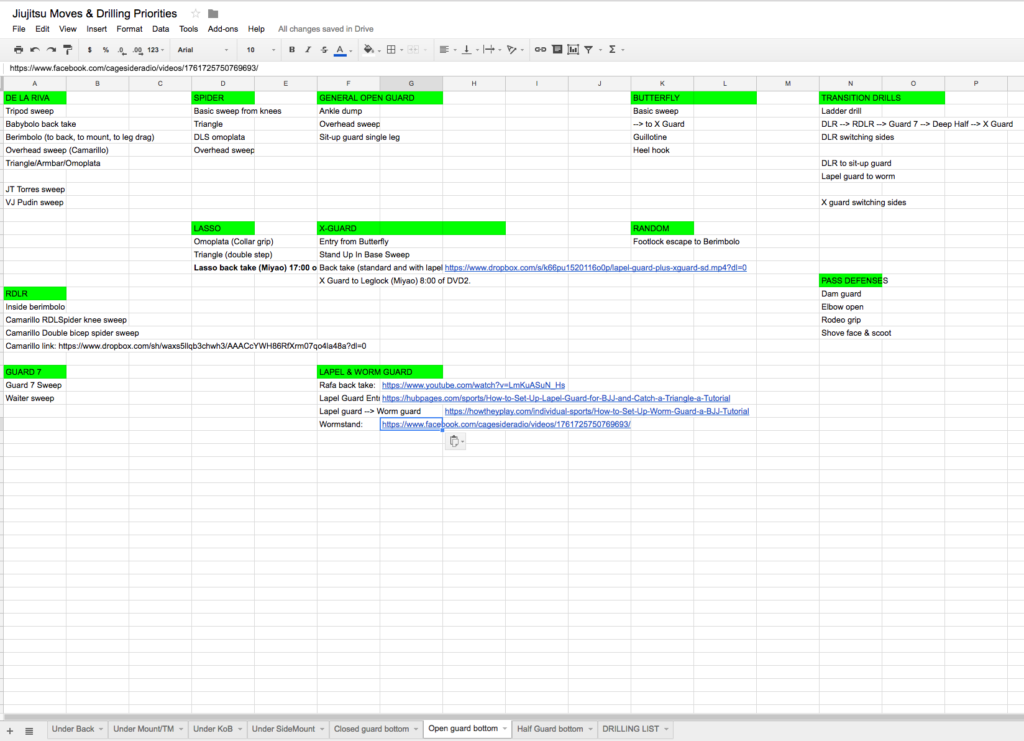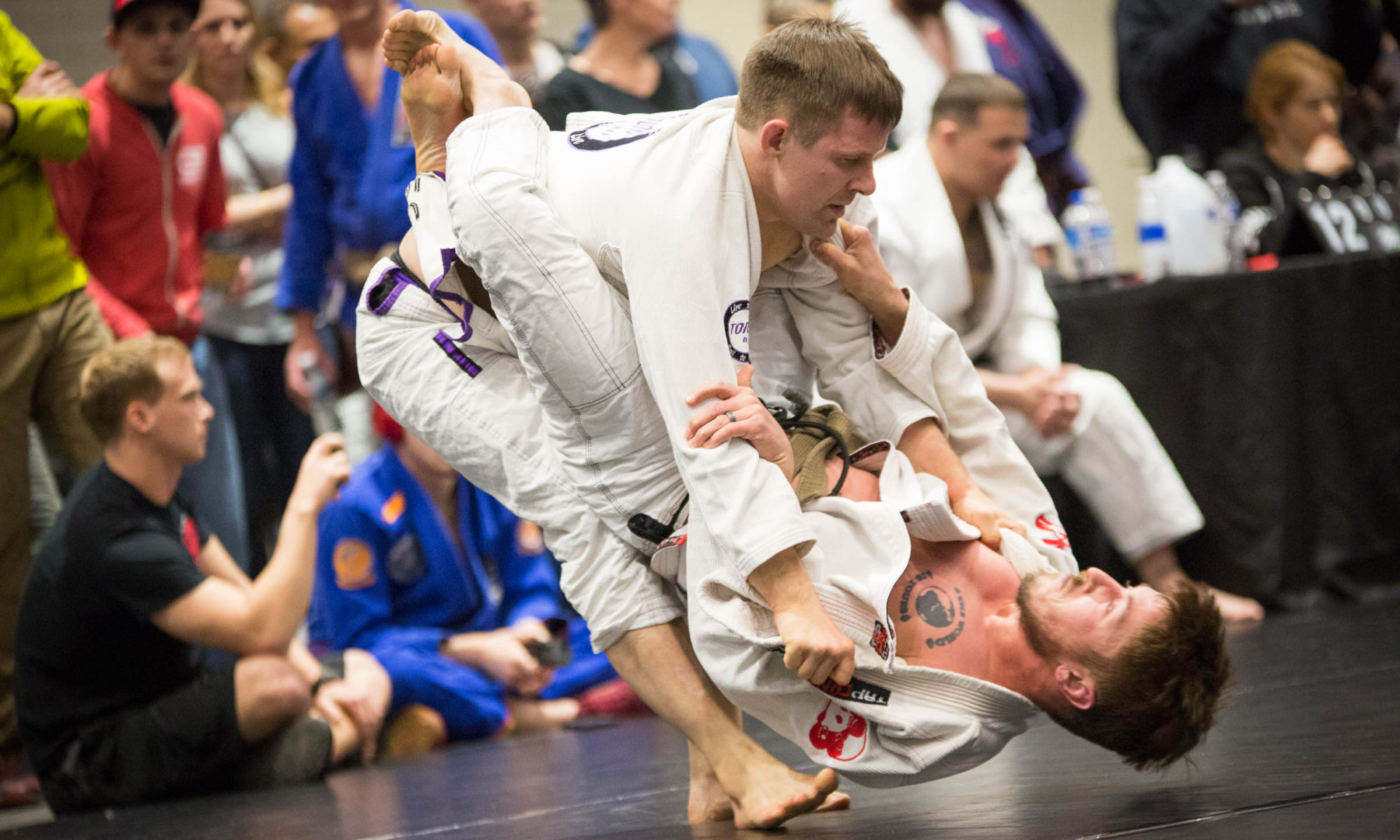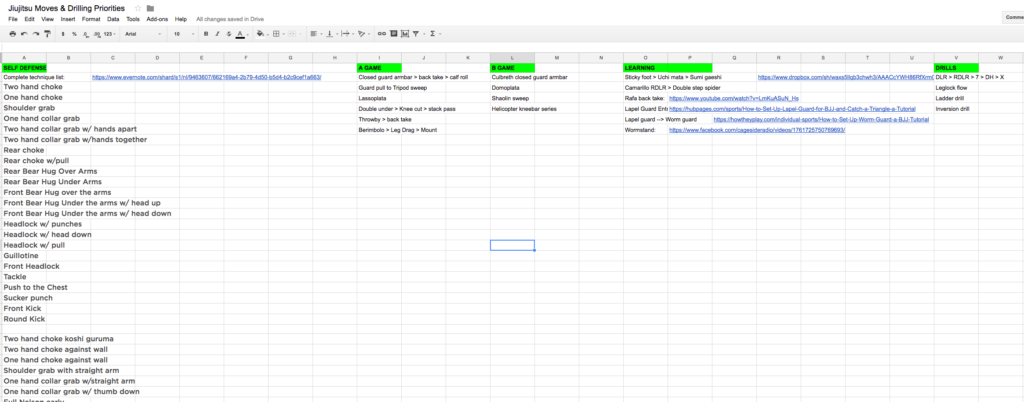As my future father-in-law says: you pay for everything with either money or time, and sometimes both. Ideally, you should maximize your return on all investments.
If you go to class three times a week, you’re probably spending at least 7 hours of your life (and your monthly gym dues) trying to learn jiujitsu. Maybe you’ve had the experience of learning a move, being interested in it, playing around with it … and then two months later, you have no clue what happened, and six months later when your instructor shows you the move again you slap your forehead because you forgot you’d even seen it.
Or take going to a jiujitsu seminar, for another example. If you spend $65 and two or three hours of your life to learn from Dave Camarillo, for example, you probably learned a lot. You’ve invested time and money. What if someone told you just a little more effort could cement that knowledge in your mind, expanding your repertoire over the long term?
Well, that someone is me.
Here are a few simple steps you can take in the days following learning something that will help that technique become a core part of your game. Don’t fret if you don’t do something like this already: it’s a long journey.
Take notes.
Spending a few minutes writing down what you learned just helps inscribe those moves in your memory. Double the benefits later by typing your handwritten notes into a document or database software. Sometimes, you’ll get techniques immediately and have instant success with them. More often, you’ll try them in live rolling and experience disappointment, meaning there’s probably a detail you’re missing. Having notes means you can check yourself, and hence not wreck yourself.
I mentioned on the Dave Camarillo podcast that having notes from seminars he taught a few years ago is like having access to a whole different seminar. Notebooks are so valuable, people are experimenting with structured journals that could help format your thoughts. However you prefer to learn, lock in the benefits of that learning with a notebook.This is especially important if you have limited time on the mats. The best way to learn jiujitsu is to train jiujitsu. The second-best way is to think about jiujitsu.
There are two reasons this is true. First, we’ve talked about the benefits of visualization before, and just running these moves over in your mind helps you learn them — and maybe remind you of a few you’ve forgotten. Second, having a plan based on good information helps you train more efficiently. If you have the information that helps you prioritize how best to train, you can maximize the benefits of your mat time.
It’s better to have too much information than not enough. I write down all the steps in the move, whatever conceptual ideas I think are significant, and any details I think matter, as well as any particularly amusing quotes. This is how the phrase “Never try to footlock a Polynesian” ended up in my database.
Create a list — or better yet, a spreadsheet — containing all the moves you learn. Then integrate it with your other resources.
If for no other reason that it’s satisfying to look back and see just how many moves you’ve actually learned, make a list of those moves sometime. You can either go full nerd like I do, or you can just start writing down all the moves you know in each position. Rank them in order of effectiveness, if you want: listing them all is the key point. If you’re like me, this very exercise with jog your memory about moves you used to use and should probably get back to.
Most importantly — because the future is more important than the past — knowing what you know will help you plan your training sessions. We all learn differently, and so I encourage you to experiment and figure out what’s best for you. Here’s what I do, though.
I use three primary resources to record and plan my training: Evernote, a note-taking and memory software that allows you to embed videos; Google Sheets, a free equivalent to Microsoft Excel, where you can create spreadsheets; and DropBox, where I house all the instructional videos I either buy or record at seminars. These all work together. I mention this because I want to show you exactly how my setup works.
My spreadsheets are divided into two “Top” and “Bottom” documents, with tabs that break out each position. Next to any of the moves where I have instructional resources, I paste a link. So if I’m working on Worm Guard, for example, I might paste links to Daniel Frank’s tutorial on HowTheyPlay, or to my own notes on my training with Daniel in Evernote, or my personal videos that I hosted on Dropbox — whatever will help me retain the information better. Here’s a screenshot about how this works in practice:
I try to identify transition drills that help me connect the positions whenever possible, too. More on that later.
Create drilling priorities and rank them.
Once, when I was visiting Unity in New York City for a week, I walked in a few hours early for class. The Miyao brothers were there, having slept on the mats. They woke up, moved out of the little fort they’d constructed from bean bags, and started drilling berimbolo.
You might think that there’s nothing unusual about that — of course world-class competitors are dedicated, and of course they’d drill berimbolo. They’re famous for the move!
Think a little deeper, though: these guys have been famous for that move for probably five years. How many times do you think, in class, drilling, or training, they’ve done the day-one berimbolo? It has to be tens of thousands. And on a random Tuesday, they wake up and do it again. I think this is the new-school equivalent of that photo of Rorion Gracie and Fabio Gurgel doing mount escape drills.
No one is equally good at everything. A belt is an aggregate: you might have blue belt level passing but brown belt toe holds. The point I’m trying to make is this: it’s not just important to drill moves you just learned. It’s important to be as effective as possible with the moves you’re best at.
I want to have a baseline knowledge of everything, and be sharp at the techniques I’m best at. Drilling has always been an important part of the strategy to get to that point. Recently, I’ve started running a drilling class where I can work the moves I need to work as well as providing a chance for teammates to do the same. During this class, we have the opportunity to do between 6 and 8 drilling rounds with a partner. These rounds are precious, especially if you have limited time to train.
To get the most out of these rounds, I want to devote some time to the A Game material, some rounds to the B Game material, and some rounds to the new techniques I’ve just learned, so I can reinforce them. There’s a section of the spreadsheet that is devoted to these priorities, and I want to show you how that’s situated. My school focuses on self defense, so I’ll always do at least one round of self defense. For the other categories, I try to have at least five possibilities in each category. That way I can pick and choose what seems interesting, or what best fits the day’s drilling theme. For example, if the theme is guard passing, I might select a section of A, B and C techniques along those lines.
I know with a maximum of eight rounds, I’m not going to get to everything. Usually, it winds up being 1 round of self defense, two rounds of A Game stuff, two rounds of B game stuff, and 2 rounds of new stuff, with a spare round for general positional drilling. I try to make sure I mix it up from top to bottom, and try to drill escapes as much as I drill attacks. (I used to list “to drill” techniques by position instead of by level of familiarity, but I find this more useful).
This is how I set up my planning. It’s useful both in process and in outcome: just devoting more mental energy to jiujitsu is valuable, and this method has really helped in getting where I want to go.
There’s one critical element I’ve saved for last, though. If you do this, I absolutely promise you’ll improve. Ready?
Actually drill.
This is the part where you lock in your benefits. People love to roll, and rolling is fun. Not everyone loves to drill.
But if you show me a world champion, I’ll show you someone who has spent countless hours drilling, and someone who probably — like the Miyaos — still puts in the time and effort on their very best moves, even if they’ve done those moves 10,000 times.
Drill what you think you know best. Drill the moves you know but could do better. Drill the moves you just learned. And — a subject I should have paid more attention to in this post — drill the transitions between all of these moves (how one guard pass or sweep connects to the next option, when they defend. I’ll do a future post on this.) Do self defense drills, guard passing drills, sweep drills and submission drills. If you just learned something amazing, stay after class and spend five extra minutes drilling that. If you can’t find a partner, do solo drills.
You invest so much of your life into jiujitsu. Another five minutes to lock in those returns is a profound force multiplier for your learning. Don’t miss out.


All very smart reinforcement to learning. I have notes from when I wrestled back in high school in the late 80’s. I keep mine on paper though. Good idea with coordinating with Evernote.
This is a well written and important guide to improving in jiu jitsu (or anything else) . I found it particularly helpful as I am getting back into training after some time off to do other things and feeling a little lost at the moment. This approach will help me focus on the areas that really need. Thank you Jeff!